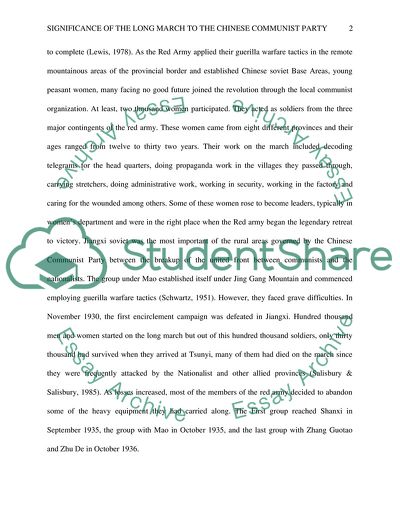Cite this document
(Significance of the Long March to the Chinese Communist Party Essay Example | Topics and Well Written Essays - 2500 words, n.d.)
Significance of the Long March to the Chinese Communist Party Essay Example | Topics and Well Written Essays - 2500 words. https://studentshare.org/history/1865862-the-long-march
Significance of the Long March to the Chinese Communist Party Essay Example | Topics and Well Written Essays - 2500 words. https://studentshare.org/history/1865862-the-long-march
(Significance of the Long March to the Chinese Communist Party Essay Example | Topics and Well Written Essays - 2500 Words)
Significance of the Long March to the Chinese Communist Party Essay Example | Topics and Well Written Essays - 2500 Words. https://studentshare.org/history/1865862-the-long-march.
Significance of the Long March to the Chinese Communist Party Essay Example | Topics and Well Written Essays - 2500 Words. https://studentshare.org/history/1865862-the-long-march.
“Significance of the Long March to the Chinese Communist Party Essay Example | Topics and Well Written Essays - 2500 Words”. https://studentshare.org/history/1865862-the-long-march.


